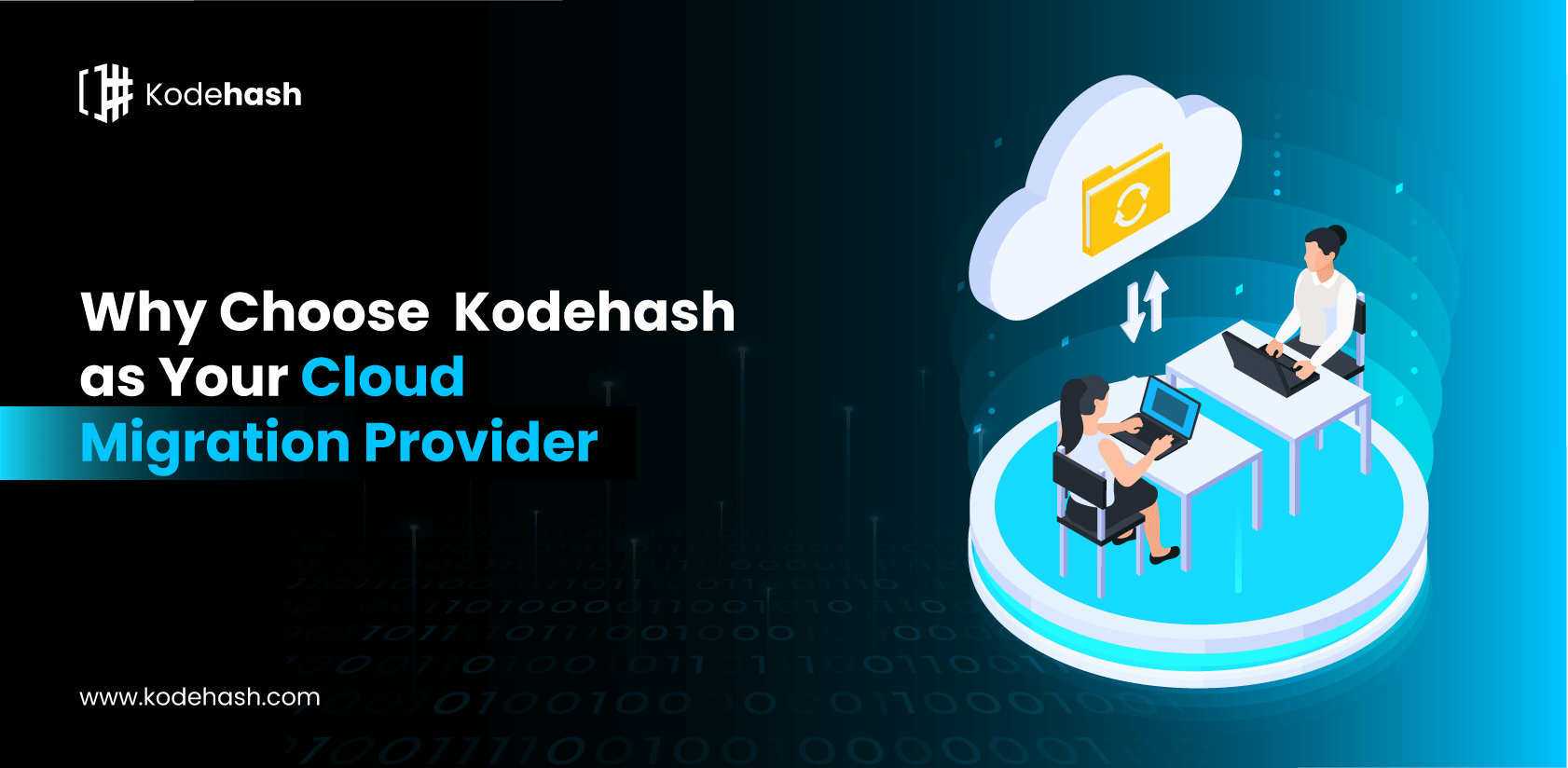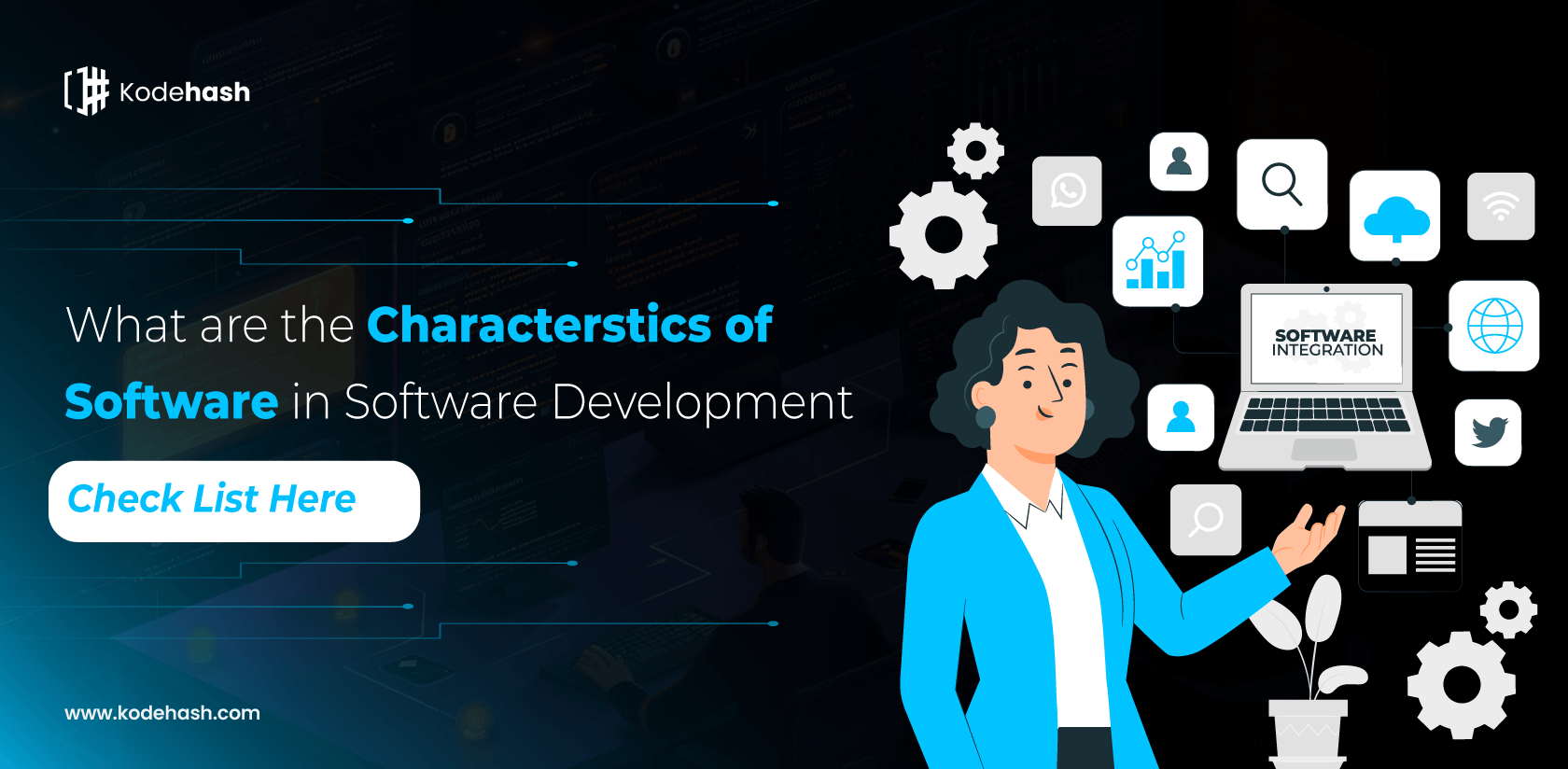Why Choose Kodehash as Your Cloud Migration Provider?

Understanding cloud migration, its benefits for business, and how one can prepare a proper cloud migration strategy, all help to make a smooth transition to the cloud. In this blog, Kodehash will help to meet cloud complexity and how to make it useful for your business through different integrations. The team works with you to make the right planning for cloud services, cloud migration for the operating model, roadmap, and ecosystem partners. Kodehash as your partner not only helps to accelerate migration but also modernizes the cloud system to make it agile, cost-effective, and secure.
Let’s explore the ins and outs of cloud migration, how you can prepare your business for it, and how it is important for your business.
What is a Cloud Migration?
Cloud migration is the process of moving your business’s data, applications, and emails to a cloud computing environment. In layman’s language, it is the process in which businesses are moving to the cloud and the products used to get there. Most cloud providers offer different tools and services so that you can easily migrate your workloads and applications easily. Basically, it takes away the pain and uncertainty of moving your assets by offering easy yet effective solutions. IT partners can help in managing the budget, and services, and reduce the time scale of the migration to lessen the business disruption and downtime.
The Significance of Cloud Migration Services
This service helps organizations to transition their on-premises applications, infrastructure, and data to cloud platforms. It is a fact that you can’t deny the migration benefits.
As per Gartner, public cloud services were assumed to grow by 23.1% in 2021 and reach a total of $332.3 billion.
Here are just a handful:
Cost Savings: The need for on-premises hardware and maintenance cost eliminations helps businesses to achieve significant cost reductions. Many organizations agree that their IT cost would drop by 30-50 percent from the use of this technology.
Scalability: Businesses can scale resources up or based on cloud infrastructure demand that ensures optimal performance with cost efficiency. If you have a new application to deploy or want more data to accommodate, you can rest assured knowing that you will find the space for it in your cloud environment.
Flexibility: You can access data and applications from any place, anytime, on any device that empowers remote work with collaboration. Cloud computing services initiate facilitates like bring-your-own-device(BYOD), and remote working policies. Here you get the freedom and flexibility of productivity-boosting work applications through the right enterprise mobility suite and cloud provider.
Agility: The solutions bring new applications and services to rapid deployment, and help organizations to respond quickly to market changes.
Security: Cloud computing offers unparalleled security for your asset protection. For instance, Microsoft provides app security, intelligent threat detection, multi-factor authentication, and comprehensive security reviews across our resources. As a result, there will be less chance of breaching or hacking of your data security.
The six stages of a cloud migration strategy:
- Project Brief
Define objectives, scope, and constraints to lay the groundwork for a successful migration strategy.
- Project Initiation
Define team roles, timelines, and resources at the time of conducting initial assessments and risk analysis to kickstart the migration process.
- Project Design
Build an architectural blueprint, go for appropriate cloud services, and customize migration methods for the organization’s requirements and goals.
- Project Plan
Outline a roadmap for tasks, milestones, and other dependencies to guide the execution phase for smooth progress on your migration journey.
- Project Governance
Robot monitoring, control, and communication mechanism implementation to track progress, manage risks, and maintain alignment with your organization’s objectives to meet stakeholder expectations.
- Project Completion
Successful migration validation, ongoing operation transitions, conduct post-migration assessments, by ensuring the cloud environment for secure and scalable performance optimization.
Crafting an Effective Cloud Migration Strategy by Kodehash:
Embrace a low-cost path to the cloud environment with Kodehash’s solutions. Our services improve operational efficiency, modernize legacy portfolios, and speed up development cycles. In the domain, we combine our cloud migration consulting services with applied expertise. Here is a breakdown of an effective strategy at Kodesh:
- Assessment and Planning: Current infrastructure, applications, and workloads evaluation to determine their suitability for migration. Find Out the dependencies, opportunities, and risks for the optimization.
- Prioritization: As per business objectives, complexity defines migration priorities. So that you can segregate which workload should migrate first and which can wait.
- Execution: Execute the plan with detailed attention with minimal disruption to business operations. Go for appropriate migration techniques such as rehosting, re-factoring, or re-architecting as per the requirements.
- Testing and Validation: Do thorough testing for migration success validation to ensure application performance as per cloud environment expectations.
- Optimization: Monitor and optimize cloud resources consistently. It will not only maximize performance but also secure the optimization and become cost-effective over time.
The importance of Cloud Migration Partners
To navigate easily cloud migration complexities, one must consider partnering with trusted migration providers first.
2022 IDC report defines, that 90% of enterprises will depend on a mix of on-premises/ dedicated private and public clouds to meet their infrastructure needs through legacy platforms.
Proven Track Record: Look for a successful migration provider partner across vivid industries to use cases.
Expertise & Certification: Ensure your partner has expertise and certifications in cloud technologies for instance Azure, AWS, and Google Cloud.
Comprehensive Services: Choose the best partner for cloud migration services. Check whether your partner is offering end-to-end services like assessment and planning to ongoing support.
Commitment to Innovation: Your partner should stay with the latest cloud trends, best practices, and technologies to drive consistent innovation and improvement.
SAP Solutions on the Cloud
Adopt SAP solutions with the cloud not only for streamlining operations but also to drive growth.
As per SAP in 2025, SAP will no longer support its business suite that is needed for customers to transition to SAP S/4HANA.
At Kodehash, we offer comprehensive SAP solutions on the cloud. Let businesses utilise the full SAP potential along with leveraging agility, and scalability within cloud computing cost-effectiveness.
With Kodehash, businesses can:
- Migrate SAP landscapes to leading platforms like AWS, Azure, or Google Cloud with minimal downtime and risk.
- SAP optimization performance, cloud availability, and scalability to ensure seamless access to process complex business data.
- Increase SAP security, leveraging advanced cloud-native security features with its best practices.
- SAP S/4HANA migration helps drive innovation and agility with real-time analytics, and digital transformation initiation with automation.
- Reduce infrastructure costs, improve resource utilization, and accelerate time-to-market for new initiatives to maximize ROI on SAP investments.
Drive more value to cloud services with Kodehash
Our end-to-end cloud migration services:
- Cloud Migration Consulting
- Cloud migration strategy
- Cloud readiness assessment
- Workload planning
- Application Migration
- Application rehosting and re-platforming
- Architectural upgradation
- Software Rebuilding
- Functionality replacement
- Infrastructure Migration
- Legacy infrastructure migration
- Cloud infrastructure development
- Cloud implementation and monitoring
- Private and public cloud integration
- Storage & Server Migration
- Data centre migration
- Cloud database migration and management
- Data storage and flow administration
- Cloud server migration
- Platform Migration
- AWS cloud migration
- Azure cloud migration
- Google cloud migration
- Cloud-to-cloud migration
- Cloud Implementation
- Cloud implementation strategy
- Migration backlog creation
- Task implementation
- Component testing
Why Kodehash for Cloud Data Migration?
- Robust and business-focused cloud transformation capabilities
- Choose the optimal platform for legacy application migration to the cloud
- Cloud optimization best practices within minimum cost
- Get full engineering support to re-architect and re-platform applications
- From day one receive transparent, collaborative, and communicative team
- Our engineers manage complex tasks such as AWS cloud migration by freeing up your IT team.
Final Thought
The Kodehash team is committed to helping businesses grab full potential cloud computing while driving growth, agility, and innovation. At Kodehash, we do agree with the Deloitte survey, according to which 87% of respondents believe cloud migration has had a positive impact on their organization’s ability to innovate.
Starting from assessment, planning, and execution to optimization, Kodehash is your most trusted partner in every single step. Contact us today to learn more about how we can help you drive more value in the cloud to achieve your business goals with confidence.
Recent Blogs
Subscribe:
Subscribe for the newsletter and receive email notification of every future post.




